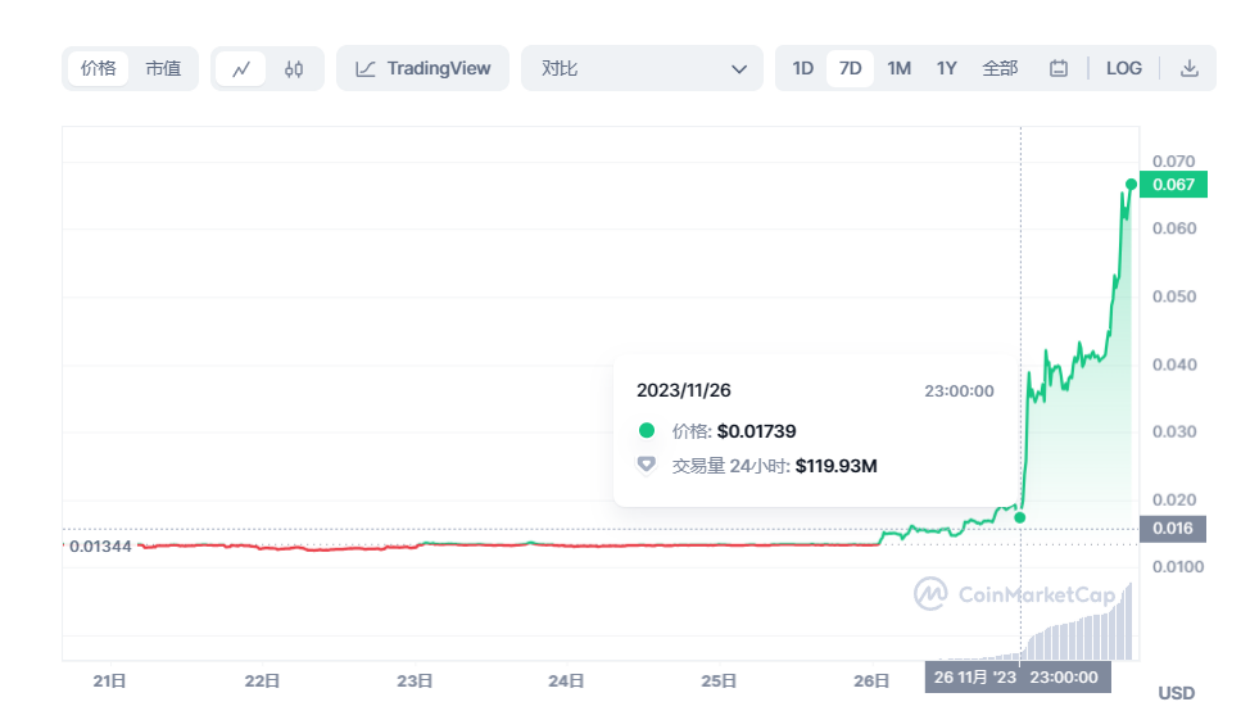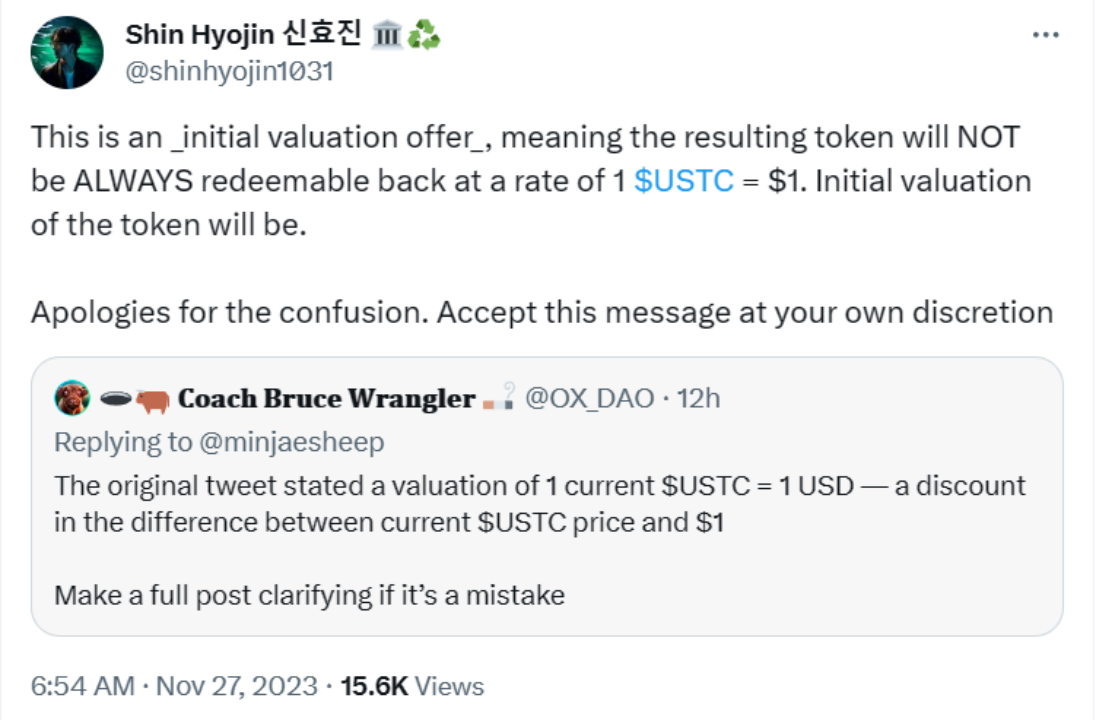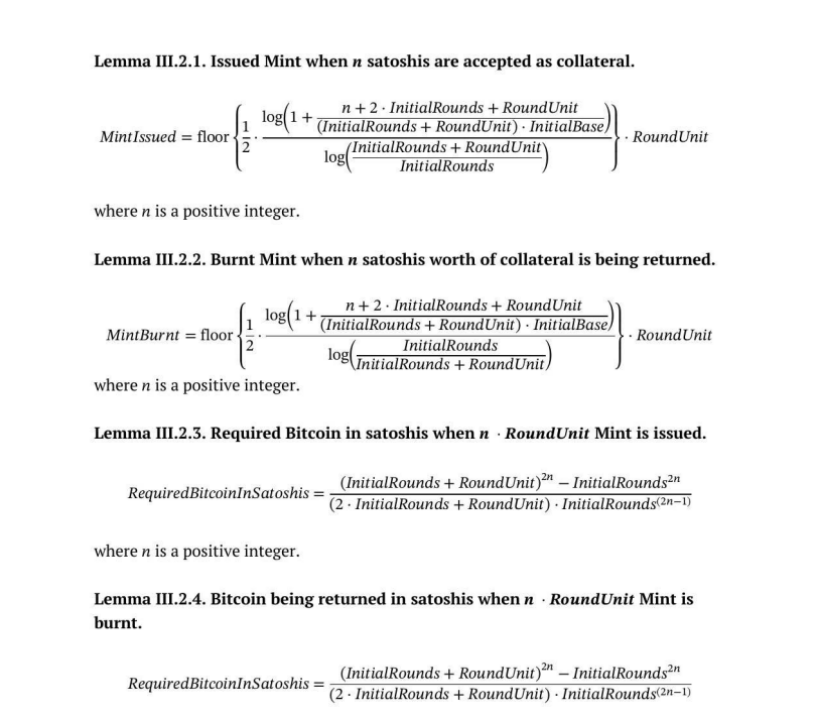The Mint Cash Behind USTC's Surge: A New Exploration of Stablecoins Under Bitcoin Collateral
Author: veDAO Research Institute
On November 26 at 11 PM, the original Terra ecosystem stablecoin USTC suddenly surged, rising from 0.02 USDT to a peak of 0.05 USDT within an hour, an increase of 250%. As of the time of writing, it remains around 0.065 USDT, reaching a new high in a year. Influenced by expectations of the airdrop for the new stablecoin project Mint Cash in the Terra ecosystem, USTC's popularity has returned overnight. The market speculates that this is related to the airdrop empowerment of Mint Cash, developed by former Terra members, and the proposal to restore USTC's dollar peg.

What is Mint Cash
Mint Cash is a stablecoin system based on BTC collateral, aiming to combine the advantages of the Terra ecosystem with Bitcoin's censorship resistance and anti-inflation properties, providing stable and efficient payment and savings solutions. The project maintains purchasing power stability through an innovative synthetic exchange mechanism while offering returns to cash holders and promoting the development of DeFi.
According to the official white paper, the main features and design goals of Mint Cash include:
No reliance on centralized institutions, fully supported by Bitcoin collateral, enabling stablecoin exchange and payments;
Utilizing a synthetic asset exchange mechanism that does not require large amounts of collateral like traditional over-collateralization systems, thus achieving high capital efficiency;
Implementing monetary policy flexibility through interest rate adjustments, taxation, staking mechanisms, etc., to withstand price shocks;
Providing stable and high-yield savings accounts through the Anchor protocol;
Supporting multiple currencies, including stablecoins for other major fiat currencies besides the US dollar;
Drawing on traditional monetary policy economic models and adjusting for blockchain characteristics to ensure smooth operation between Mint Cash tokens and various stablecoins;
Implementing moderate capital control measures to prevent large capital outflows, thereby maintaining system stability;
Offering a synthetic foreign exchange lending market to increase system liquidity and facilitate exchanges between multiple currencies.
Participation Methods:
Mint Cash allows users to participate in two ways using USTC: first, users who held UST or LUNA before the Terra collapse on May 10, 2022; second, by locking and destroying a specified amount of USTC through Mint Cash's airdrop.
Team Members
The core developers of Mint Cash come from the former Anchor team and Aleph Research, with the core developers responsible for developing the stablecoin protocol. Additionally, Aleph Research is involved in the development of the new version of the Anchor Protocol, Anchor Sail, which will play a key role in the growth and anchoring of stablecoins within the Mint Cash ecosystem. Furthermore, the team is planning to collaborate with the smart contract platform CosmWasm and the EVM L1 blockchain Berachain to build a Polaris EVM support based on the Cosmos SDK.
Reasons for USTC's Surge

The reason for USTC's surge lies in a previous tweet by Mint Cash core developer Shin Hyojin explaining the airdrop rules: "We will airdrop an equivalent amount of tokens at a valuation of 1 USTC = 1 USD (specific circumstances may vary), which is a discount of up to 99%." In the eyes of most users, USTC was only about 0.015 USD before this surge, and after the surge, it peaked at only 0.067 USD, making it more than a 20-fold valuation amplifier.

Although Shin Hyojin clarified in a tweet on the 27th that "this is an initial valuation quote, meaning the tokens received will not always be exchanged at a rate of 1 USTC = 1 USD," market sentiment had already been ignited. Currently, the total issuance of USTC exceeds 9 billion, leading to speculation that the nominal initial valuation of the project will be very high, potentially reaching tens of billions of dollars.
Design Model of Mint Cash
Instead of using algorithmic stablecoins, Mint Cash generates stablecoins through BTC collateral, which is similar to Maker DAO's over-collateralization model. So what are the differences between the design of Mint Cash and Maker DAO's DAI, and does Mint Cash have unique features?
According to the white paper published by Mint Cash, let's take a look at the virtual liquidity model between Mint Cash and Bitcoin:

The virtual liquidity model between Mint Cash and Bitcoin is defined in the document by the following four lemmas:
Lemma III.2.1: Defines the amount of Mint Cash issued when n satoshis are collateralized.
Lemma III.2.2: Defines the amount of Mint Cash destroyed when redeeming n satoshis of corresponding collateral.
Lemma III.2.3: Defines the amount of Bitcoin collateral required to issue n RoundUnits of Mint Cash.
Lemma III.2.4: Defines the amount of Bitcoin collateral returned when redeeming n RoundUnits of Mint Cash.
These formulas establish the correspondence between the inputs and outputs of Mint Cash and Bitcoin. When the amount of Bitcoin collateral flowing into the system varies, the corresponding amount of Mint Cash issued or destroyed can be determined based on these formulas.
To control capital flow, the white paper also mentions the introduction of the BaseCollateralLiquidity parameter, which, combined with the constant product formula in Uniswap, forms a virtual liquidity model with a liquidity cap. This limits the total amount of capital that can flow into or out of the system within a unit of time. The aforementioned virtual liquidity model controls the capital exchange process between Mint Cash and Bitcoin, achieving regulation of the system's capital inflows and outflows. This is the foundation for Mint Cash to implement flexible monetary policy and capital control features.
In summary, Mint Cash and MakerDAO demonstrate two different methods and philosophies in stablecoin generation. MakerDAO's DAI focuses on providing stability through over-collateralization and partial reliance on centralized stablecoins, while Mint Cash emphasizes utilizing Bitcoin's decentralized properties to achieve stability through a synthetic exchange mechanism.
Conclusion
Overall, Mint Cash's goal is not to pull USTC back to 1 USD; its essence is to launch a new project that can use USTC to participate in IDOs. Additionally, to some extent, the Mint Cash airdrop can be seen as a proactive attempt for USTC to move towards destruction and deflation by expanding its use cases. This stimulates users to actively lock USTC to participate in the airdrop and destroy the corresponding USTC.
From the information currently disclosed, USTC and the subsequent Mint Cash and new Anchor use cases are largely unrelated, and users should remain cautious in their participation. It is also important to note that Mint Cash currently only has a white paper and has not officially launched a product yet.









